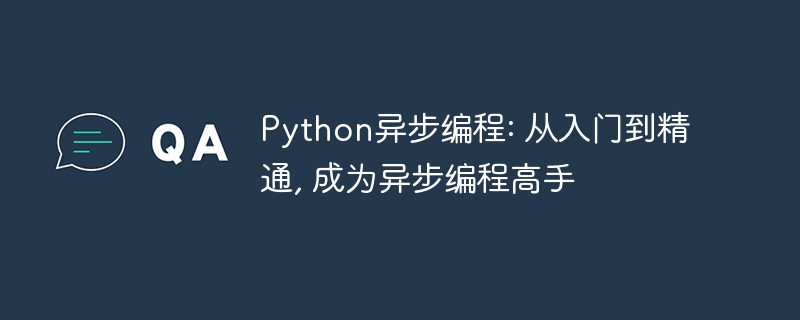

1. What is Python asynchronous programming?
pythonAsynchronousProgramming is a programming technology that achieves concurrency and high performance through coroutines and event drivers. A coroutine is a function that allows a function to continue execution after being paused. When a coroutine is suspended, its state and local variables are saved so that execution can be resumed when it is called again. Event-driven is a programming style that responds to events. In an event-driven program, when an event occurs, the program executes the corresponding event handler.
2. Coroutines and event drivers
Coroutines and event-driven are the two core technologies of asynchronous programming. Coroutines allow a function to continue execution after being paused, while event-driven allows a program to respond to events. These two technologies can be combined well to implement high-performance concurrent programs.
3. Advantages of Python asynchronous programming
PythonAsynchronous programming has the following advantages:
4. Application scenarios of asynchronous programming
Asynchronous programming can be applied to various scenarios, including:
5. How to learn Python asynchronous programming
If you want to learn asynchronous programming in Python, you can refer to the following resources:
6.Demo code
import asyncio
async def main():
print("Hello, world!")
asyncio.run(main())This code demonstrates how to use Python asynchronous programming to write a simple program. This program first defines a coroutine function main(), and then uses the asyncio.run() function to run the coroutine. When the main() function is run, it prints "Hello, world!".
The above is the detailed content of Python asynchronous programming: from entry to proficiency, become an asynchronous programming master. For more information, please follow other related articles on the PHP Chinese website!




